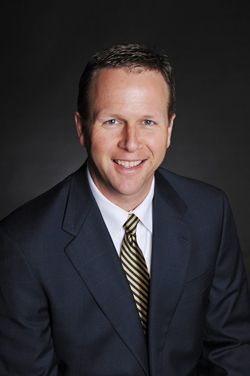Keep Risk on Your Radar (Opinion)
by November 14, 2011 1:51 pm 96 views

True story: I knew a guy whose flight to Hawaii experienced such severe turbulence, and at one point even felt like it was falling, that he pulled out a micro-cassette recorder and started dictating his will.
Never mind that his final wishes would have sunk in the Pacific Ocean. He was freaking out and trying to plan with what time he thought he had left.
The incident served as a reminder on risk. A certain amount comes with flying, and also with not planning ahead.
Retirement planning and investing are no different.
How’s the altitude of your plan and your portfolio? Do you really know how much risk you are or aren’t taking?
The planning part means setting a goal for when you want to retire and figuring out what saving rate and investing style will make it happen. Nearing the finish line, a new plan needs to take shape to turn assets into income.
Putting off or under-funding contributions to a retirement plan raise the odds of a later retirement or outliving assets. Working longer might be an option as long as your health cooperates. But in your 30s, you can’t know what your body will dictate in your 60s.
Investing is where most people equate risk.
When it comes to how much is appropriate, one size doesn’t fit all.
It’s not all that complicated when you’re young. Save as much as you can in a 401(k) or other buckets, and embrace risk in your 20s and 30s. That doesn’t mean blindly speculating in penny stocks.
Managing risk becomes more critical closer to retirement. Common sense. I meet a lot of people who tell me they understand this, but then show me a portfolio that’s half weighted in small and mid-cap mutual funds and half in their employer’s stock. Or worse, fully immersed in company stock.
Consider the other face of risk, too – not taking enough of it.
A retiree who retreats into a cocoon of low-yielding fixed income could expose his lifestyle and nest egg to being ravaged by inflation over a long retirement. Using history as a guide, a dollar today will have the buying power of about 50 cents in 20 years. Stocks, commodities, real estate and currencies still have their place in retirement.
Bonds are traditionally more stable than stocks, but aren’t without peril. See 1994 for a history lesson on interest-rate risk.
So we should reduce risk as we age, but not totally abandon it; be wary of equities, but don’t overload on bonds. So what’s the right balance? You can buy something off the rack (think target retirement or asset allocation funds), but nothing fits better than a tailored plan.
An investor’s choices: Do it yourself or pay someone to do it.
There isn’t enough space here to cover the conversation that should take place regarding planning and investing. The best way to summarize it is to say it should be a thoughtful, thorough process.
A financial advisor can develop a plan. Look for someone who asks questions and listens.
For the self-directed investor, a few worthwhile tips:
• Develop a plan for how much you should save.
• Do homework. This doesn’t end once the investments are in place. It should be a regular, ongoing process.
• Remove emotion as much as possible.
• Be patient.
• Be wary of following the crowd for too long. Investors shovel big sums into equity funds near market tops and panic out near the bottoms. Richard Bernstein, an institutional investor who’s made some dead-on calls in his time, listed one of his investing lessons as: “Bull markets are made of risk aversion and undervalued assets. They are not made of cheering and a rush to buy.”
• Do more homework. Know what you’re buying. Read quarterly reports and prospectuses. Read the news. Read opinions. In this new normal of higher volatility and lower fixed-rate returns, homework is more essential than ever.
• And manage risk, whatever form that may take in your life or portfolio. That might mean adding some life insurance or rebalancing your IRA.
Benjamin Graham, the patriarch of value investing, wrote in his book “The Intelligent Investor,” “The essence of investment management is the management of risks, not the management of returns.”
We all know there’s turbulence out there. Plan now instead of waiting until it hits.
Scott Cain is a financial advisor for Arvest Asset Management and can be reached at [email protected].
